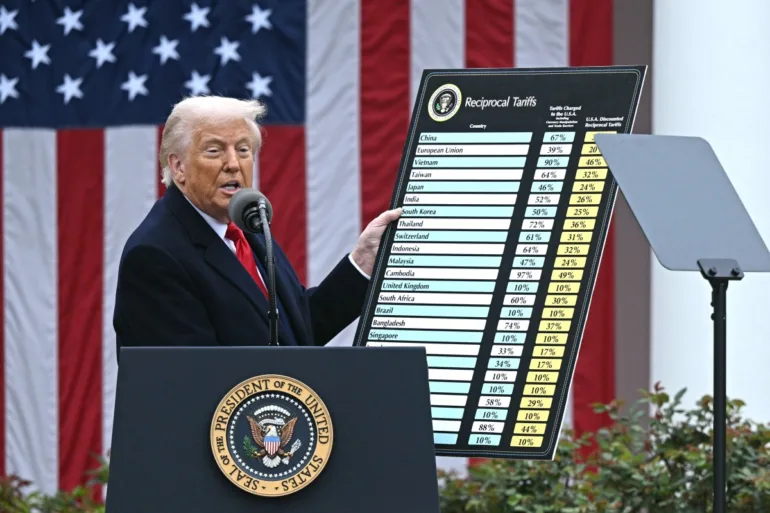President Donald Trump announced sweeping new tariffs Thursday on nearly 70 countries, including a sharp 35 percent duty on neighboring Canada, as part of a broader effort to remake global trade in favor of the U.S. economy.
In a limited reprieve, the White House said most of the tariffs would take effect in a week—delaying the initial start date of Friday—to allow room for last-minute negotiations.
The move marks a dramatic escalation in Trump’s protectionist trade policy, which aims to boost domestic manufacturing and curb foreign imports. While supporters see tariffs as a tool to strengthen U.S. industry, critics warn of inflationary pressures and economic disruption.
The new tariffs, outlined in an executive order, raise duties from the 10 percent level imposed in April to as high as 41 percent, depending on the trading partner. Products routed through third countries in an attempt to bypass U.S. tariffs will face an additional 40 percent duty.
Canada was hit particularly hard. Tariffs on Canadian goods will rise from 25 to 35 percent starting Friday—unlike most other countries, which were granted a week’s delay. Trump had threatened retaliatory trade measures after Canadian Prime Minister Mark Carney announced plans to recognize Palestinian statehood at the UN General Assembly in September.
“Wow! Canada has just announced that it is backing statehood for Palestine,” Trump wrote on Truth Social ahead of the announcement. “That will make it very hard for us to make a Trade Deal with them.”
In contrast, Mexico—another major trading partner—was granted a 90-day delay on a planned increase from 25 to 30 percent after direct talks between Trump and Mexican President Claudia Sheinbaum.
Despite the sweeping changes, exemptions remain in place for goods covered under the North American trade pact, although the revised tariffs create uncertainty around the future of U.S. trade with both Canada and Mexico.
The tariffs follow months of high-stakes negotiations, delays, and legal challenges. A lower court recently ruled that Trump may have exceeded his authority in imposing blanket tariffs under emergency economic powers, a decision now under review by the U.S. Court of Appeals.
“These actions tear up the trade rule book that has governed global commerce since World War II,” said Wendy Cutler, senior vice president of the Asia Society Policy Institute. “Whether our partners can preserve it without the United States is an open question.”
Trump’s latest order adjusts duties across a broad range of countries. Switzerland now faces a 39 percent tariff. Taiwan saw its tariff reduced from 32 to 20 percent, though President Lai Ching-te vowed to push for further cuts. Cambodia and Thailand both secured lower rates—19 percent—after initially facing proposed duties of 49 and 36 percent, respectively. Vietnam, Japan, Indonesia, the Philippines, South Korea, and the European Union reached deals to avoid steeper hikes. Britain, not initially targeted, also finalized an agreement with Washington.
One conspicuous absence from Thursday’s announcement was China. Tariffs on Chinese goods are set to rise again on August 12 unless both sides can extend their current truce. At the height of U.S.-China trade tensions, tariffs reached triple-digit levels before a partial rollback in recent years.
Despite the legal and economic risks, Trump remains steadfast. On Thursday, he declared that the U.S. economy has “no chance of survival or success” without tariffs.
Economists caution that the long-term effects remain unclear. While customs revenues have surged, some analysts warn that higher import costs could feed inflation. Proponents argue the economic impact will be short-lived, but the broader consequences are still unfolding.
AFP


